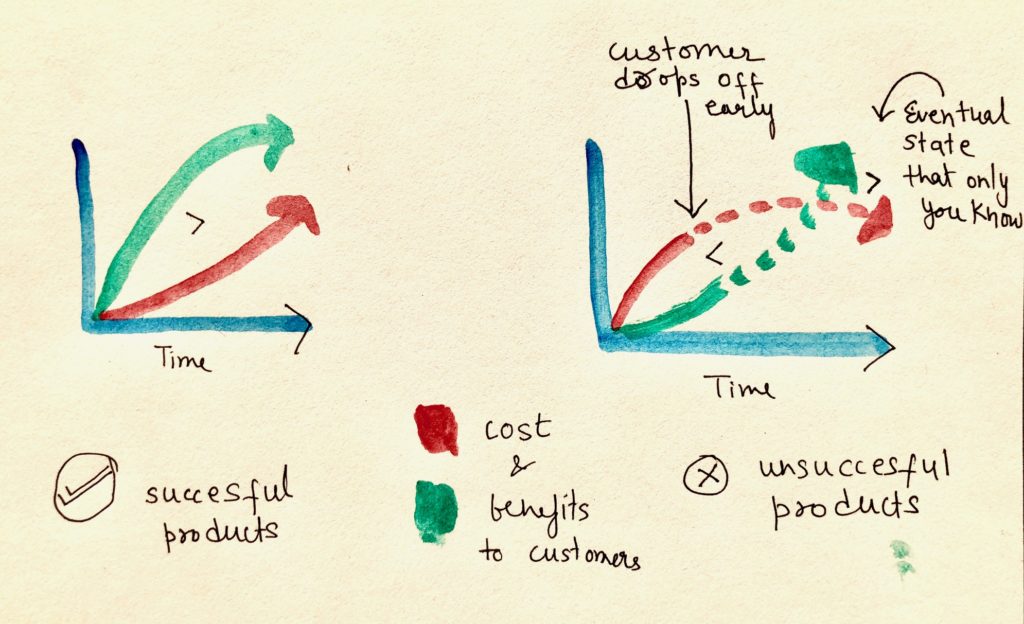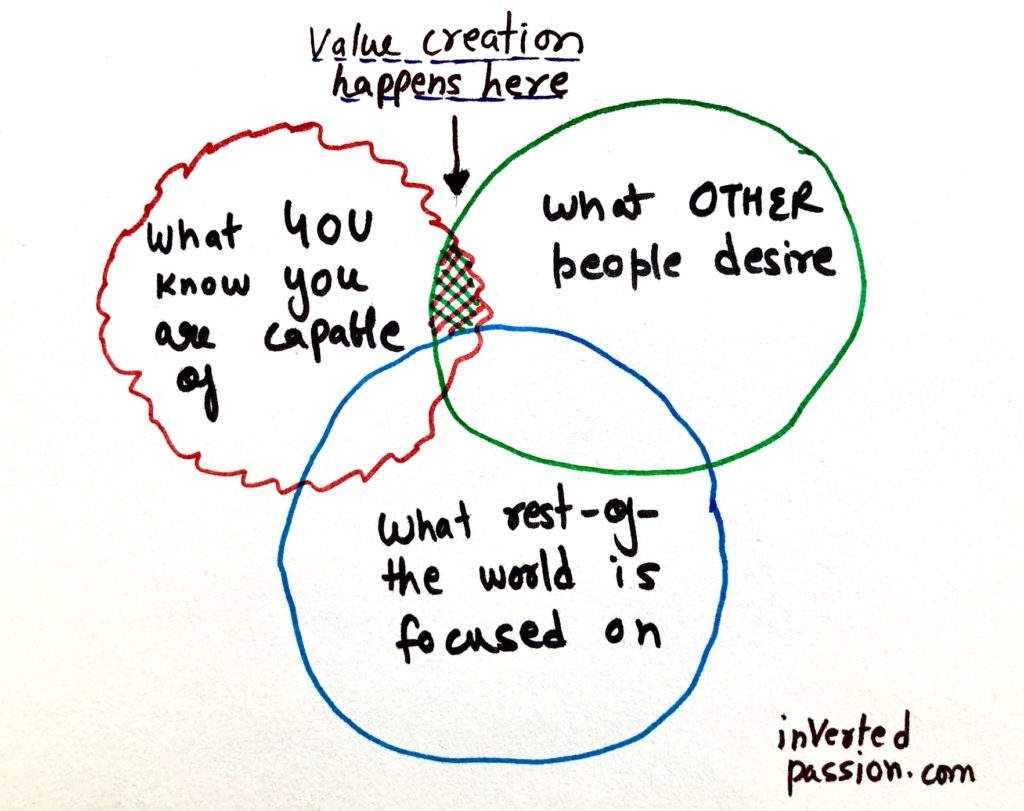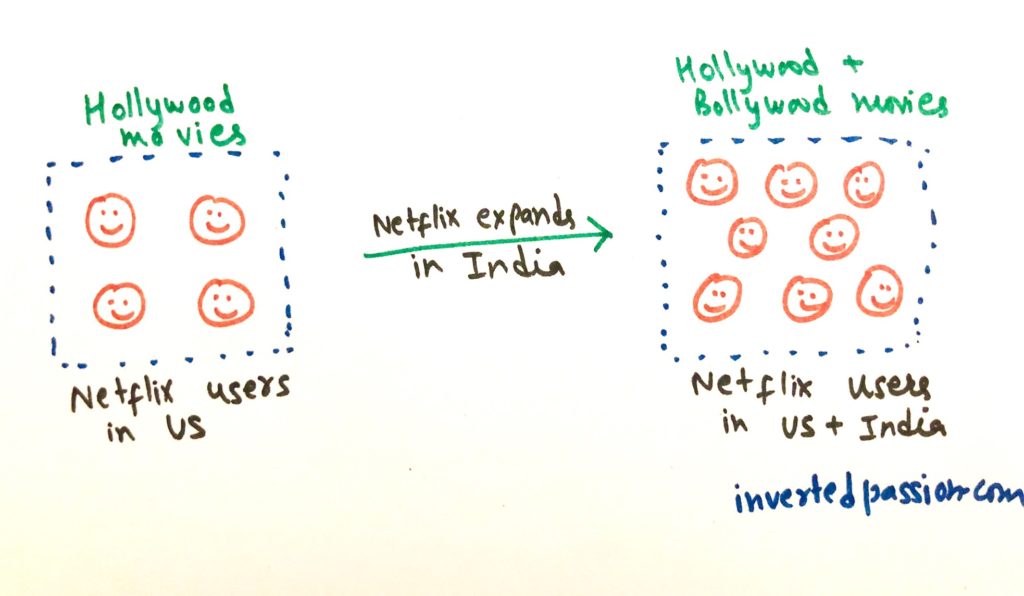In my conversations with other entrepreneurs, I’ve come across tens of startups that started with a B2C angle but eventually succeed as a B2B company. Outside of my experience, famous examples include Slack that started as a gaming company. VWO’s competitor, Optimizely, started as a company that made math teaching apps for children. In my experience, it’s far more common to pivot from B2C to B2B than the reverse. Why does that happen?
On Inverted Passion, I love to get into the details of the structure of success and analyze things beyond surface level impressions. So here are all the reasons why B2B proves to be a better option after failure in B2C.
Consumers want to conform, companies want to differentiate
Most consumers at any given moment are satisficed with what they have. Since we’re creatures of habit, we tend to go to the same restaurants that we like, buy the same stuff as we’ve always done and live our days without significant deviations. We’re less exploratory than we’d like to think. This is because there’s a cost of change. Whenever we are trying a new product, we’re incurring a cost (of effort, time or money). And, we go to great lengths to avoid these costs (even to the extent of jumping red lights when that’s clearly life threatning).

As social animals, we usually want to conform to what others around us are doing. We do not want to be left out of social phenomena of favorite movies, fashion trends, and what’s new. This makes it hard for a new a B2C startup to gain traction because it faces a chicken and egg problem: nobody uses their product because nobody else is using it already.
Companies, on the other hand, are usually on a lookout to differentiate. Instead of conforming, companies want to gain an edge by doing something nobody else is doing. That’s why they’re willing to give startups a shot. New products will make them faster, cheaper or better than the competition. (Of course, there are consumers who want to differentiate from each other. But the greater tendency for humans is to avoid being a sore thumb.)
Consumers hate getting sold to, companies love it
Many failed B2C products might have been beneficial for consumers if they had the patience to understand what the product might do for them. But consumers are impatient and if the value is not delivered immediately and continuously, they might stop engaging further and abandon the product for what could have been later valuable.
In B2B products, the customer is habitual to getting sold. In fact, they prefer a sales process where a human explains them the benefits and costs of the product. This preference to being sold allows an entrepreneur to communicate the total benefit of his product in a way that’s impossible to do in a consumer scenario. Imagine if you go to sign up for Facebook, and they start a video telling all the small and big features of the platform. As a consumer, you’ll immediately hit the back button. But for a B2B product, if you get their initial interest, prospects will want to watch videos, discuss and request presentations to understand what they will get for the price.
This means that there are a lot more ways for a B2C product to go wrong: bland marketing messages, confusing first few seconds of onboarding, boring look and feel, lack of habit building, etc.
Consumers want stuff for free, companies want to pay
This is perhaps one the biggest reason for the pivot. As Mark Zuckerberg famously said, there’s no point in monetizing a consumer product unless you have a billion users. Consumers are increasingly getting habituated to getting stuff for free. This makes monetization for consumer products very tricky.
Businesses, on the other hand, actually prefer paying. Enterprises won’t buy your product if they think it’s is too cheap. So, the possibility of early cash creates lures the entrepreneurs to pivot to B2B.

Evidently, B2B is less sexy but it pays the bills. See my earlier article on why librarians make more money than scientists.
Winners usually dominate in B2C, while B2B is long tail
There are hundreds of CRMs but only one major social network because consumer markets are prone to winner-take-all effects. This is because the network effects for millions and billions of consumers aggregate and make existing consumer products an obvious choice for the remainder of consumers left in the market. If you have Uber that all your friends are using and it has all the drivers in your city, why would you try something else?

For B2B, since the number of businesses is far less than the number of consumers, whatever network effects are there, they are weaker than B2C. There are network effects in B2B for sure: partner network and communities emerge from successful B2B products but their impact is weaker. These network-effect driven benefits in B2B can be overcome via better service. As a B2B startup, if you understand that nobody really likes using technology and all they want is to get their work done, you can offer consulting services and customized solutions to help them do that.
That’s why there are hundreds of CRMs out there that businesses buy in spite of Salesforce because these non-Salesforce CRMs are able to offer a better service, customized implementation or that tiny feature that some companies want (which Salesforce doesn’t have).
Of course, there’s a flip side to this. Because few B2C products dominate the entire market, the largest tech companies in the world are predominantly B2C.
Every sale conversation in B2B is a valid feedback
Most products fail not because they’re bad, but because nobody pays attention to them. Entrepreneurs can deal with negative feedback by improving the product, but what they don’t know what to do with when there’s no feedback (good or bad). This non-usage leaves an entrepreneur uncertain of the direction about where to go from there.
In contrast, every sale conversation an entrepreneur has for a B2B product is a feedback on how to improve it. What matters for new products is conversations; feedback gives energy and inspiration to an entrepreneur. In B2B, it’s easier to get hold of someone and have them give honest, rational reasons for disinterest (or interest).
Consumers, on the other hand, mostly decide from their emotions and gut-feeling. That makes the analysis of feedback for consumer products much harder than that of B2B products.
Entrepreneurs are not prototypical consumers
It’s rare for an entrepreneur to be a prototype of an average consumer. Even though they shouldn’t, most entrepreneurs end up designing products that they’d love to use themselves. This means that they end up confusing their behavior with the behavior of an average consumer. But an entrepreneur has a very different personality than an average human – only the very crazy leave the comfort of a job and start a company. So entrepreneurs who design consumer products for themselves is full of risk of designing for a market that doesn’t exist.
But when it comes to companies, most companies are entrepreneurial because they want to differentiate and be ahead of the competition. So an entrepreneur’s mindset in B2B works in favor of designing and selling a product that puts an organization ahead of others in the market. This is why the chances of an entrepreneur making a B2B product more successful in relating to actual needs in the market.